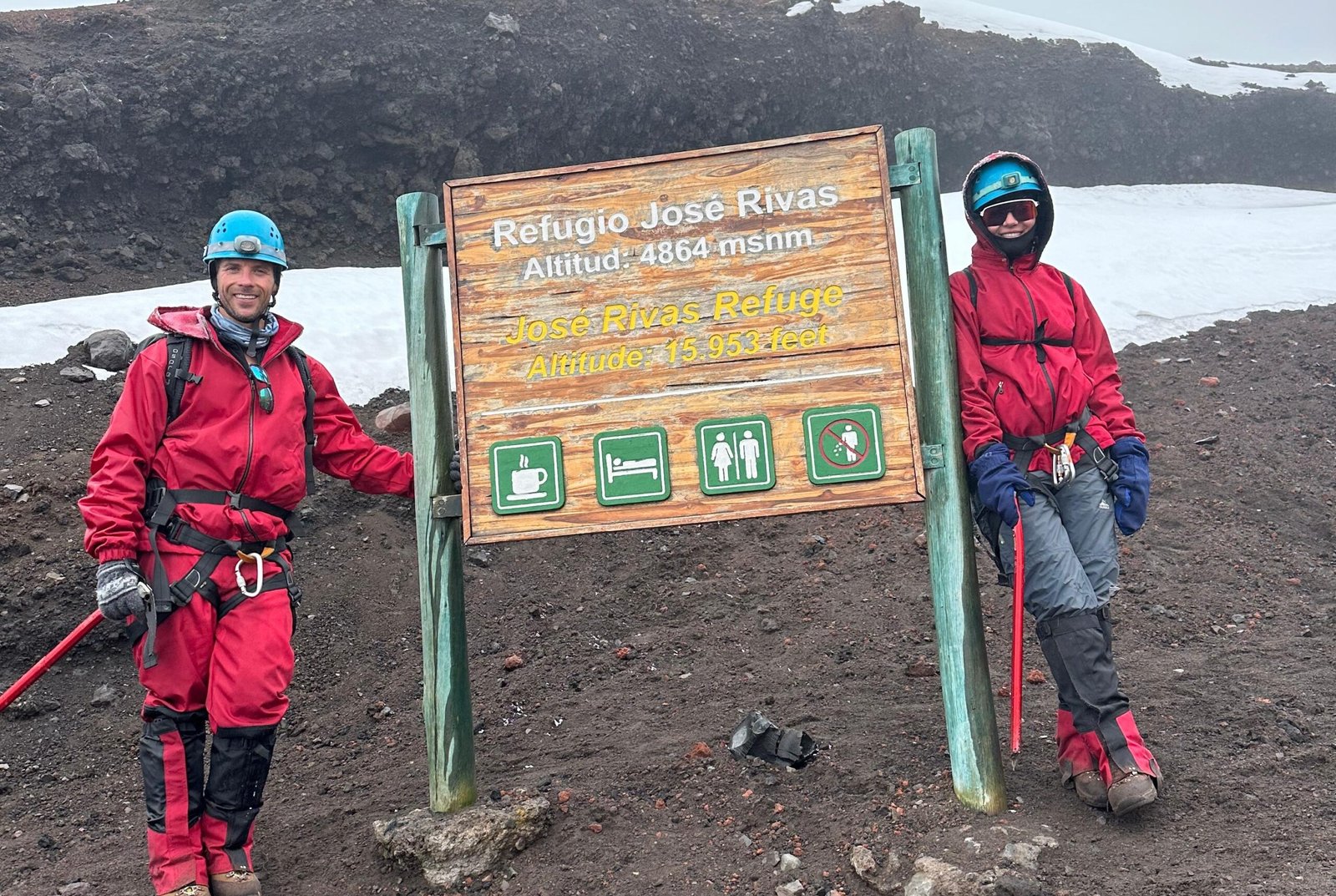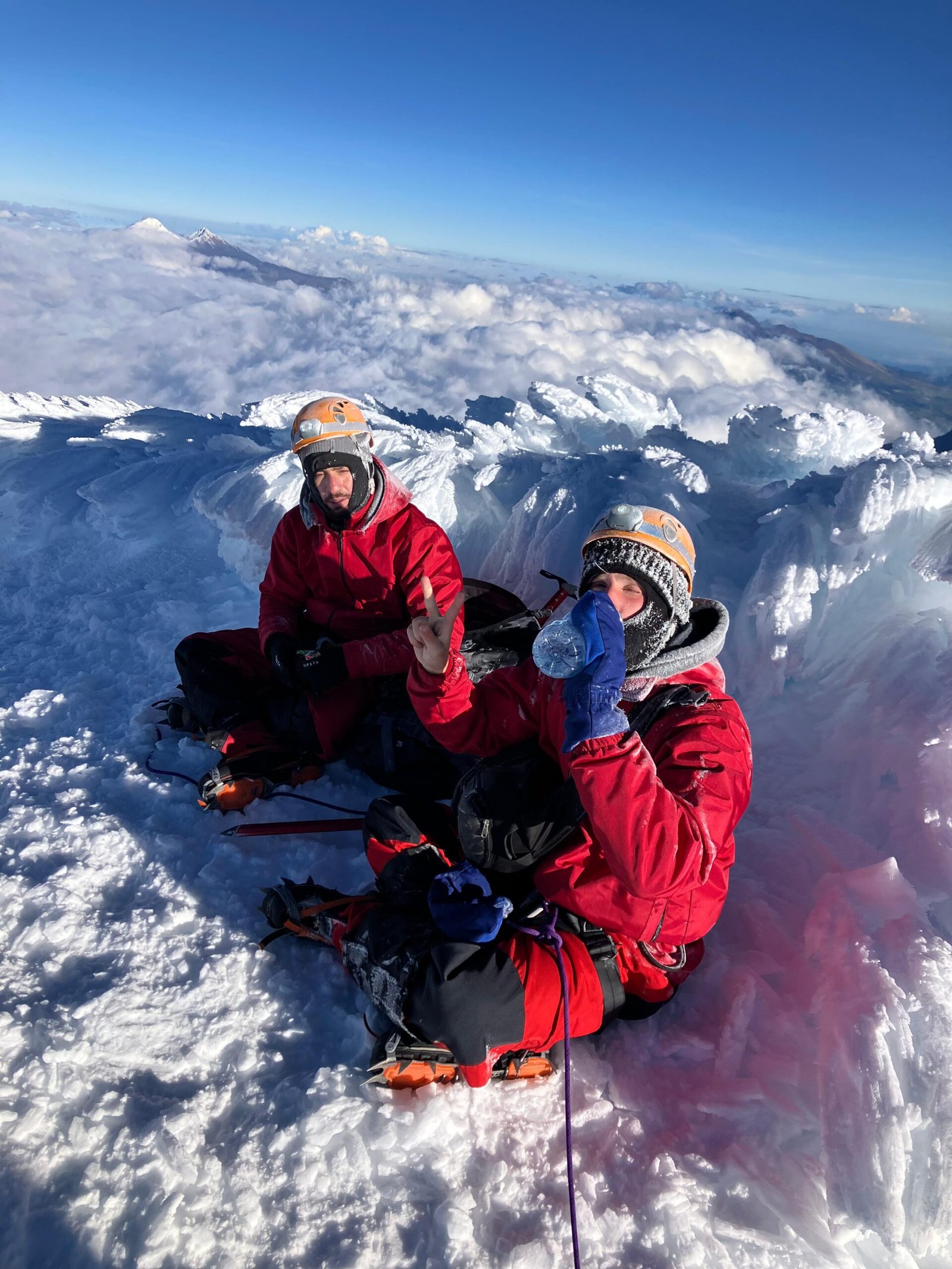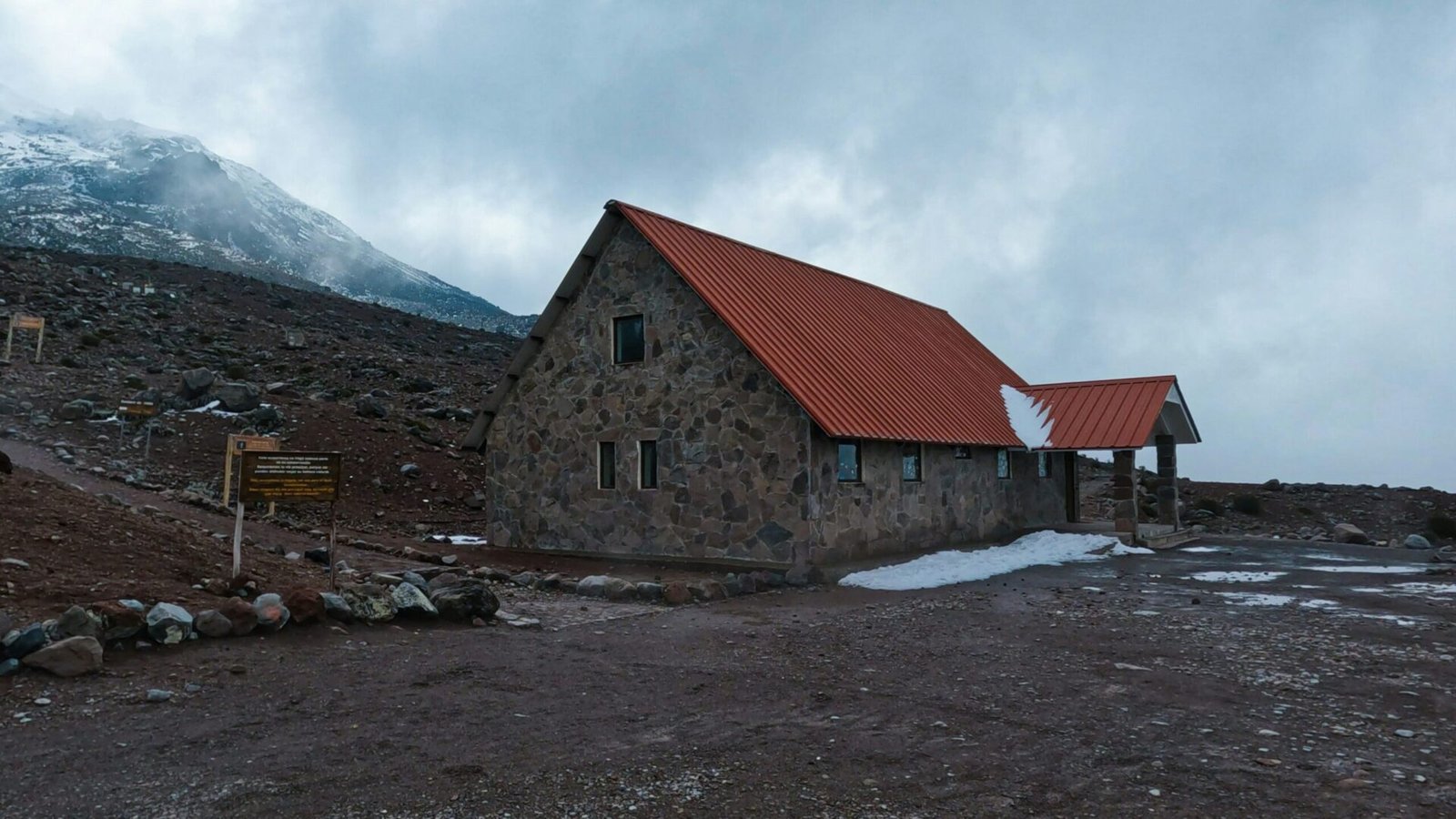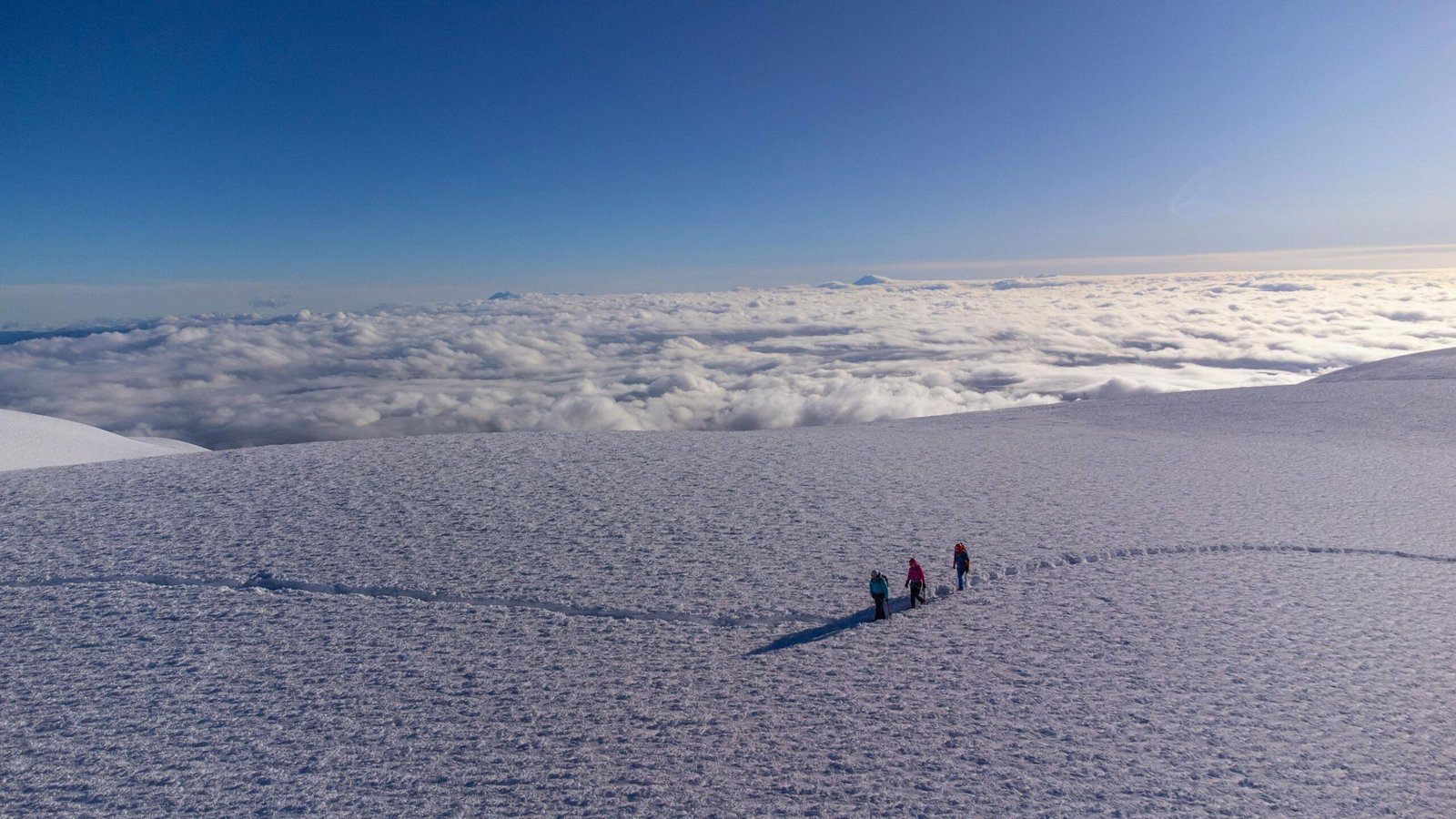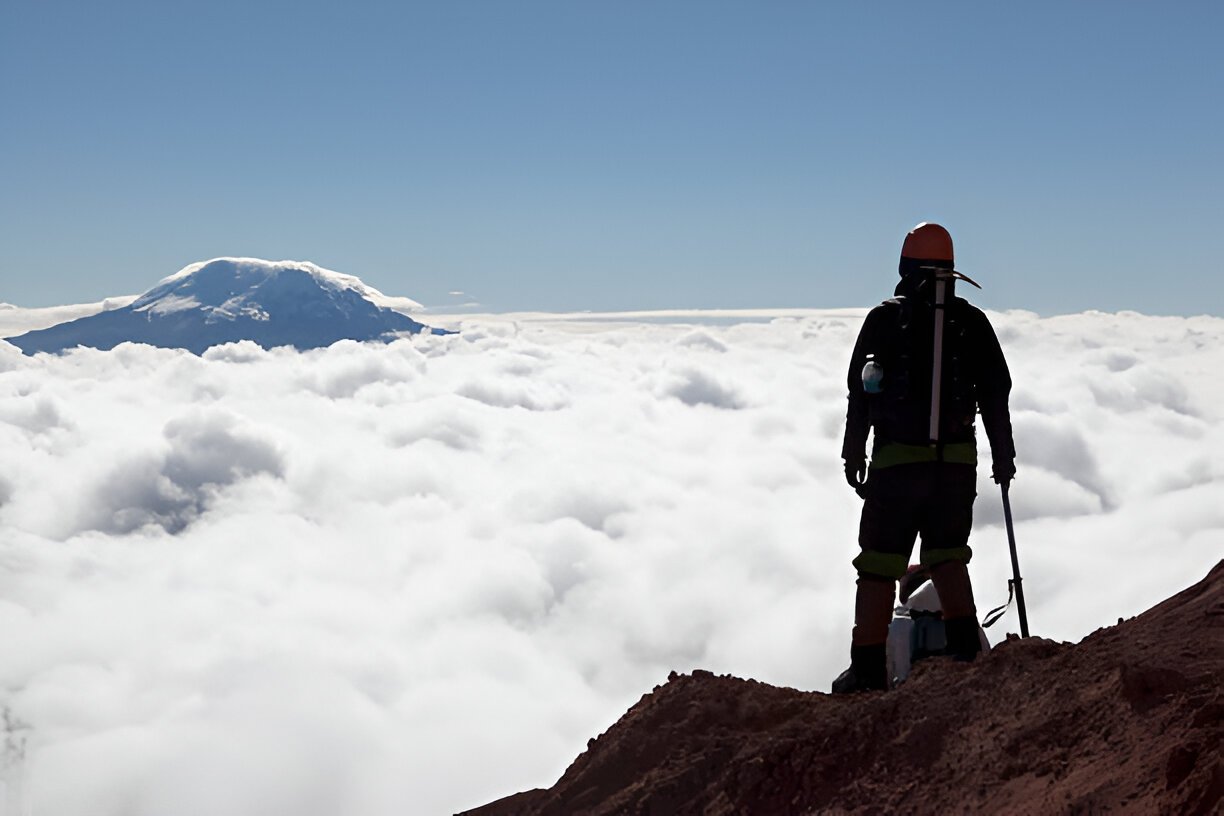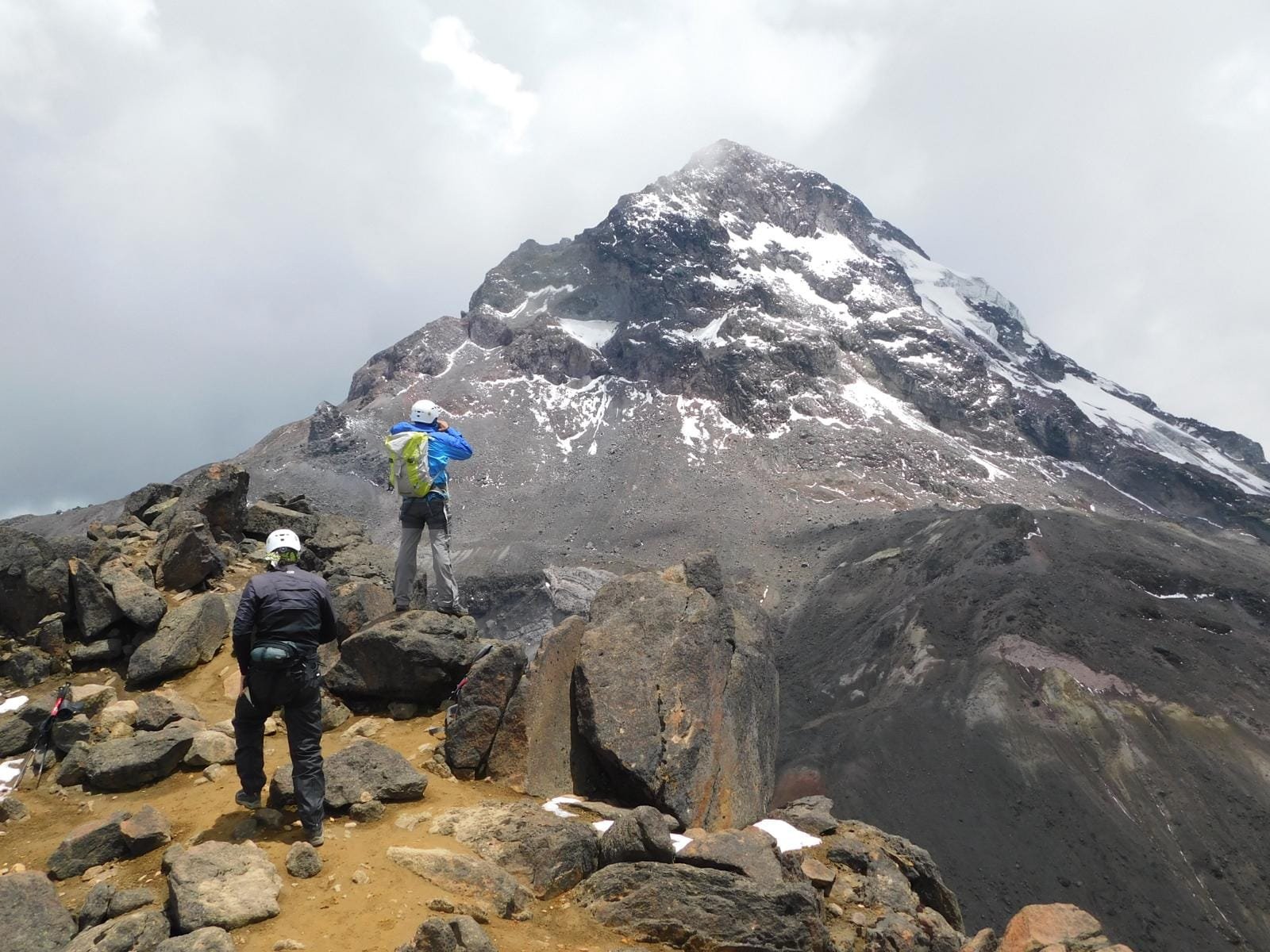From Quito
From 1010 USD p.p.
We’ll summit:
- Cotopaxi: 5,897m / 19,347ft
- Chimborazo: 6,263 m/ 20,548ft
If you’re a solo traveler, we can try to match you to another climber.
Our itinerary
Cotopaxi & Chimborazo 4-Day Summit
“Climb two highest peaks of Ecuador:
Cotopaxi & Chimborazo await.”
Solo Traveler Rate: from 2020 USD for 1 participant. Alternatively, we can try to match you with another solo traveler for the tour.
Departures are every day of the week.
Important:
Please be advised that the itinerary is subject to change without prior notice due to external factors and at the discretion of the guide.
Activity times are approximate and may be adjusted if necessary.
Although we recommend participants have good fitness for the hike’s and climbs physical demands, please note that our experienced guide will always be there to provide support.
Please note that when you are a solo traveler and request us to match you with another climber, we cannot guarantee the physical condition or prior experience of your partner, just as we cannot guarantee your conditions and experience to the other climber. As a solo traveler with significant mountain experience and a strong desire to ensure a successful summit, we always advise booking a private tour.
Private 4×4 transportation from/to Quito
1 night at Jose Rivas Refuge (In a shared room with a shared bathroom).
1 night in a Hostel in Riobamba (Single room with private bathroom)
1 night at Whymper Refuge (In a shared room with a shared bathroom).
Meals:
- Day 1: Lunch and dinner
- Day 2: Breakfast, lunch and dinner
- Day 3: Breakfast, lunch and dinner
- Day 4: Breakfast after the climb
Full technical gear:
- Plastic boots, crampons, harness, helmet, ice axe, rope
- Waterproof jacket and pants, outer gloves, gaiters
- Headlamp (no batteries), carabiner
Access to protected areas
Summit certificate
Personal gear:
- Base layers, fleece, inner gloves, 2–3 pairs of socks
- 2 backpacks (40L and small daypack)
- Neck warmer, sunglasses, sunscreen
- Sleeping bag
- Camera
- AAA batteries (2 sets for headlamp)
Extra water (min. 2 liters per day)
Extra food, snacks and drinks
Travel or accident insurance
Tips
Taxes: Only applicable to Ecuadorian citizens and companies.
Solo Traveler Rate: from 2020 USD for 1 participant. Alternatively, we can try to match you with another solo traveler for the tour.
Departures are every day of the week.
Important:
Please be advised that the itinerary is subject to change without prior notice due to external factors and at the discretion of the guide.
Activity times are approximate and may be adjusted if necessary.
Although we recommend participants have good fitness for the hike’s and climbs physical demands, please note that our experienced guide will always be there to provide support.
Please note that when you are a solo traveler and request us to match you with another climber, we cannot guarantee the physical condition or prior experience of your partner, just as we cannot guarantee your conditions and experience to the other climber. As a solo traveler with significant mountain experience and a strong desire to ensure a successful summit, we always advise booking a private tour.
Private 4×4 transportation from/to Quito
1 night at Jose Rivas Refuge (In a shared room with a shared bathroom).
1 night in a Hostel in Riobamba (Single room with private bathroom)
1 night at Whymper Refuge (In a shared room with a shared bathroom).
Meals:
- Day 1: Lunch and dinner
- Day 2: Breakfast, lunch and dinner
- Day 3: Breakfast, lunch and dinner
- Day 4: Breakfast after the climb
Full technical gear:
- Plastic boots, crampons, harness, helmet, ice axe, rope
- Waterproof jacket and pants, outer gloves, gaiters
- Headlamp (no batteries), carabiner
Access to protected areas
Summit certificate
Personal gear:
- Base layers, fleece, inner gloves, 2–3 pairs of socks
- 2 backpacks (40L and small daypack)
- Neck warmer, sunglasses, sunscreen
- Sleeping bag
- Camera
- AAA batteries (2 sets for headlamp)
Extra water (min. 2 liters per day)
Extra foofd, snacks and drinks
Travel or accident insurance
Tips
Taxes: Only applicable to Ecuadorian citizens and companies.
Frequently Asked questions
Cotopaxi & Chimborazo
Q: What is the difficulty level of the tour?
Q: Do I need previous climbing experience for this tour?
For Cotopaxi, no previous technical experience is required, although good physical condition is recommended. For Chimborazo, some mountaineering experience and prior acclimatization are ideal, as it is one of the highest peaks in the world, measured from the Earth’s center.
Q: What’s the altitude of Cotopaxi and Chimborazo?
Cotopaxi reaches 5,897 meters (19,347ft and is used for acclimatization on Day 1. Chimborazo’s summit stands at 6,263 meters (20,548ft), making it one of the world’s highest active volcanoes.
Q: When is the best time to climb these volcanoes?
Q: How long does it take to acclimatize before this tour?
Q: What happens if one of the two summits cannot be reached due to bad weather?
Q: How many people are in a group?
This climb is available for small groups with a minimum of two participants. For safety reasons, summit day is guided with a 1:2 guide-to-client ratio.
Q: What happens if we can’t reach the summit?
High-altitude climbing always depends on weather and physical condition. If conditions aren’t safe, the guide may decide to turn back. Your safety is always the top priority.
Q: Can I climb only one of the two mountains if I change my mind during the tour?
Yes, we understand that physical conditions, weather, or simply a personal decision may mean you wish to climb only one of the two summits. In that case, you can stop your participation after the first ascent (for example, climb only Cotopaxi and not Chimborazo). However, it’s important to know that: The tour price remains unchanged, as all services (transportation, accommodation, guides, permits, etc.) are scheduled and reserved in advance. We will do our best to adapt your itinerary so you can rest, participate in another activity, or accompany the group from a safe area during the second ascent. We always prioritize your well-being and work to ensure your mountain experience is positive, pressure-free, and as flexible as possible.

